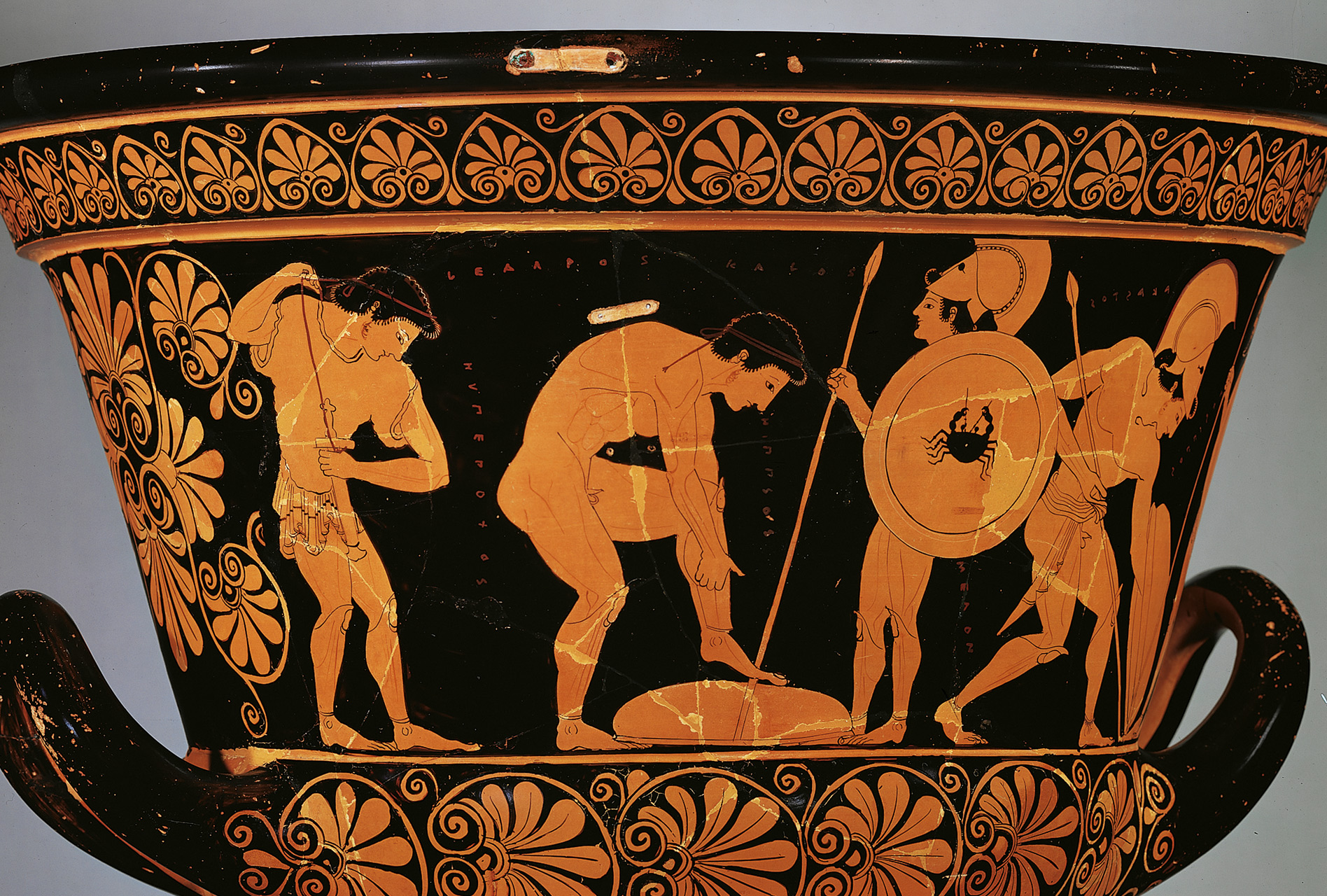
In Euphronios' version, Antaeus is defeated on the ground like a wrestler. To defeat him, Herakles had to strangle him while he still had his feet off the ground. Subject Matter The traditional story from literature of Antaeus and Herakles shows Antaeus as an earth-born giant who gets his power from contact with the earth.Stylistic features: Heads: deep from the front to the back with neat calm features Eyes: narrow and finely lashed - opened towards the tear duct Lips: generous contours Ears: heavily-lobed and, on larger figures, careful inner markings Hair: Contours reserved or incised Fingers: often nails are marked turned upwards thin and brittle.Both vases look forward to the beginning of the 5th century.

The second one has a black neck and a single figures on each side of the body in a free black field with no ground line. One has a completely black body with pictures only on the neck.

Euphronios made several different types of vases and painted on several different types as well.Date: 510-500 BC Type: Calyx Krater Potter: Unknown Height: 46cms Painter: Euphronios-signed (on side A) Diameter: 55 cms at the neck Subject: Side A: Heracles and Antaeus Side B : Youth giving a flute recital. Before looking in detail at the vase, it is probably worth reminding yourself of what kraters were used for by the Greeks. The essence of these vase is the greater detail that the artists were able to get and the greater variation using brush-strokes rather than incisions. This is the first of a new type of vase, the RED-FIGURE type, which, as its name suggests, the opposite of the type we have looked at so far.


 0 kommentar(er)
0 kommentar(er)
